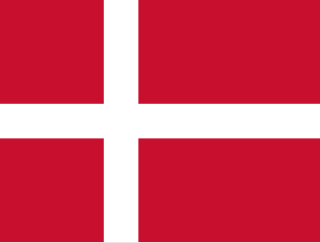
Ålborg Municipality is a municipality in North Jutland Region on the Jutland peninsula in northern Denmark. The municipality straddles the Limfjord, the waterway which connects the North Sea and the Kattegat east-to-west, and which separates the main body of the Jutland peninsula from the island of Vendsyssel-Thy north-to-south. It has a land area of 1,143.99 km2 (441.70 sq mi) and a population of 223,174.

Demographic features of the population of Denmark proper, part of the Danish Realm, include ethnicity, education level, health of the populace, economic status, religious affiliations, and other aspects.

Denmark is a Nordic country in the south-central portion of Northern Europe with a population of nearly 6 million; 767,000 live in Copenhagen. It is the metropolitan part, and most populous constituent part of, the Kingdom of Denmark, a constitutionally unitary state that includes the autonomous territories of the Faroe Islands and Greenland in the North Atlantic Ocean. Metropolitan Denmark is the southernmost of the Scandinavian countries, lying south-west and south of Sweden, south of Norway, and north of Germany, with which it shares a short border.
The Red–Green Alliance or Unity List is an eco-socialist political party in Denmark. It was founded in 1989 with the merger of three Marxist parties and it is the most left-wing party in the Folketing, where it advocates for the expansion of the welfare state and social justice as well as the socialist transformation of Denmark and the entire globe. During the 2021 Copenhagen City Council election the party placed first, with 24.6% of the votes. The party is also active in various trade unions within Denmark.

Eurostat is a Directorate-General of the European Commission located in the Kirchberg quarter of Luxembourg City, Luxembourg. Eurostat's main responsibilities are to provide statistical information to the institutions of the European Union (EU) and to promote the harmonisation of statistical methods across its member states and candidates for accession as well as EFTA countries. The organisations in the different countries that cooperate with Eurostat are summarised under the concept of the European Statistical System.

The Danish Realm, officially the Kingdom of Denmark, or simply Denmark, is a sovereign state and refers to the area over which the monarch of Denmark is head of state. It consists of metropolitan Denmark—the kingdom's territory in continental Europe and sometimes called "Denmark proper" —and the realm's two autonomous regions: the Faroe Islands in the North Atlantic and Greenland in North America. The relationship between the three parts of the Kingdom is also known as The unity of the Realm.

Official statistics are statistics published by government agencies or other public bodies such as international organizations as a public good. They provide quantitative or qualitative information on all major areas of citizens' lives, such as economic and social development, living conditions, health, education, and the environment.
World Intellectual Property Indicators (WIPI) is an annual statistical report published by the World Intellectual Property Organization (WIPO). The publication provides an overview of the activity in the areas of patents, utility models, trademarks, industrial designs, microorganisms, plant variety protection, geographical indications and the creative economy.

Morten Messerschmidt is a Danish politician and since 2022 leader of the Danish People's Party. He was an elected Member of the Folketing at the 2019 Danish general election having previously served from 2005 to 2009. At the 2014 European Parliament election, he was elected a Member of the European Parliament for Denmark with 465,758; the highest number of personal votes ever cast at a Danish election.
Denmark has seen an increase in immigration over the past 30 years, with a large part of the immigrants originating from non-Western countries. As of 2014, more than 8 percent of the population of Denmark consists of immigrants. As of Q2 of 2022, the population of immigrants is 652,495, excluding Danish born descendants of immigrants to Denmark. This shift in demographics has posed challenges to the nation as it attempts to address cultural and religious differences, labour shortages, employment gaps, education of immigrants and their descendants, spatial segregation, crime rates and language abilities.

A referendum on one of the country's opt-outs from the European Union was held in Denmark on 3 December 2015. Specifically, the referendum was on whether to convert Denmark's current full opt-out on home and justice matters into an opt-out with case-by-case opt-in similar to those held by Ireland and the United Kingdom. Approval of the referendum was needed for Denmark to remain in Europol under the new rules. However, it was rejected by 53% of voters.
Black Europeans of African ancestry, or Afro-Europeans, refers to people in Europe who trace full or partial ancestry to Sub-Saharan Africa.
Søren Egge Rasmussen is a Danish politician, serving as a member of the Folketing for the Red–Green Alliance political party. He was elected at the 2015 Danish general election, and again re-elected in the 2022 Danish general election.
Portuguese in Sweden are citizens and residents of Sweden who are of Portuguese descent.

Pelle Dragsted is a Danish author and politician who has been a member of the Folketing for the Red-Green Alliance since the 2022 Danish general election. He formerly served as member of the Folketing in 2015 to 2019.
Nesstar was a suite of data and metadata management software created in 2000 and maintained by the former Norwegian Social Science Data Services until its end-of-life in 2022. The Nesstar tool suite consisted of a Nesstar Repository, Nesstar WebView, a Nesstar Editor, and the Nesstar Explorer as the user interface.








